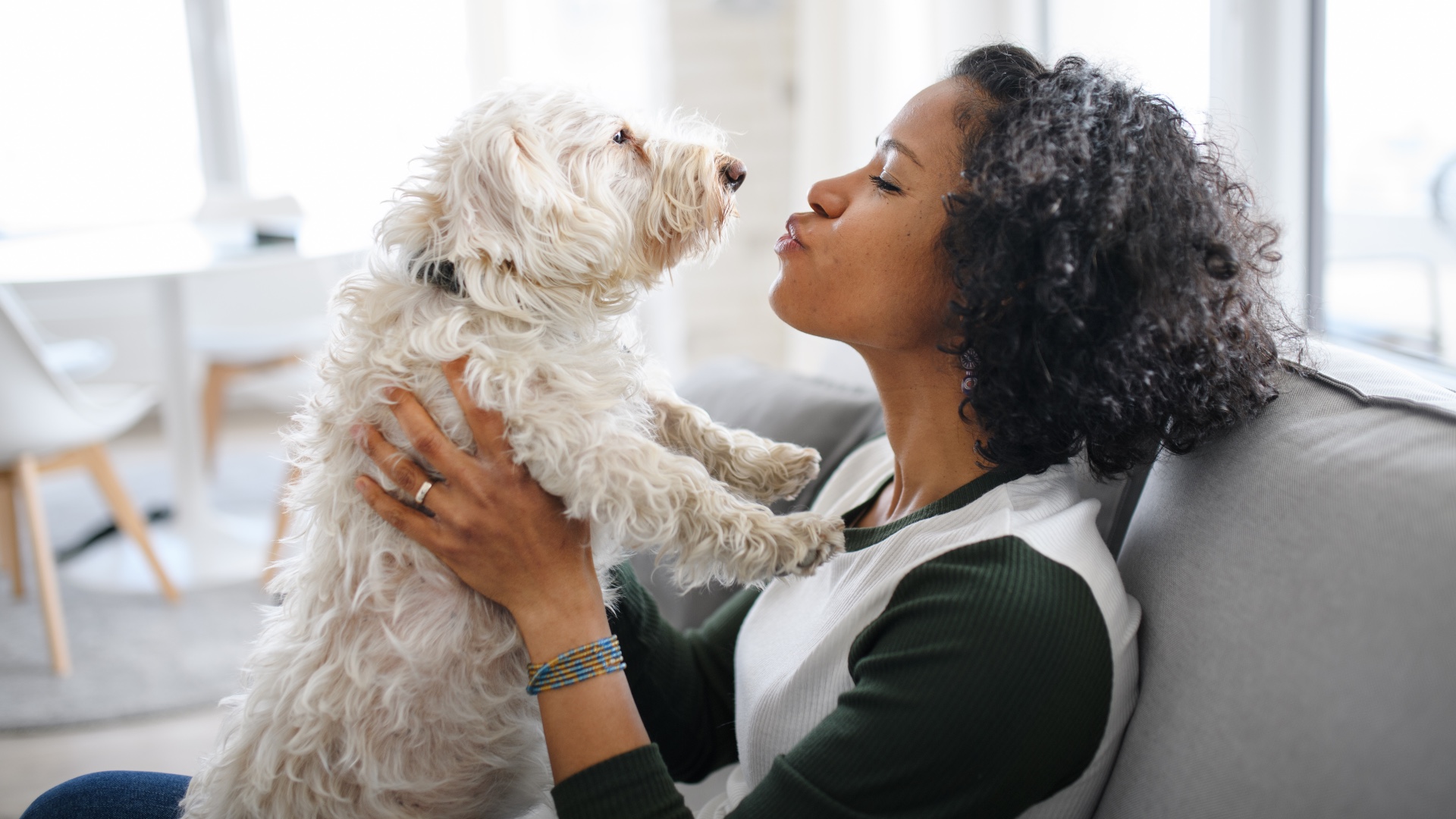
Have you ever wanted a behind-the-scenes look at what a real-life trainer does and doesn't do with their own dog? Well, you're in luck because expert trainer Nikki Mather has taken to Instagram to reveal all.
Whether you're trying to figure out the reasons why your dog's recall isn't reliable or you're wanting to avoid some of the most common loose leash walking mistakes, sometimes it can be helpful to get a sneaky peek into what the experts do.
A qualified dog trainer with the Institute of Modern Dog Trainers and a certified canine behaviorist, Mather has generously shared 11 things she avoids doing with her dog.
"Some of these things I personally choose not to do with my dog, some of these things I would advise to ALL dog guardians," says Mather.
Keen to find out what they are? Read on as Mather spills the beans!
1. Let her always roam free: "Regardless of how good my dog is off-lead, I ALWAYS put her back on lead if I see another on-lead dog," says Mather. "Why? Because it puts the other guardian’s mind at ease, it’s respectful and it avoids unbalanced dog greets."
2. Repeatedly throw a ball: "Repetitive ball throwing isn’t healthy and can be dangerous, especially when using a ball thrower," Mather explains.
3. Ignoring my dog's preferences: "Whilst there is absolutely nothing wrong with walking your dog on the street, my dog specifically does not enjoy this and becomes a little unnerved. We stick to quieter, more open spaces."
4. Expect her to do a heel walk: "Heel walking is not something I’ve ever really taught my dog - your dog’s walk should be predominantly about letting them sniff and meeting their canine needs," Mather says. "Expecting a heel position for the entire walk is unfair."
5. Put training above her welfare: "Training basic behaviors will always come second to my dog’s welfare, how happy she is and ensuring I have met all of her physical, mental, social and breed-specific needs."
6. Not giving her a choice: "When it’s safe to do so, I give my dog as much choice as possible," Mather explains. "This may look like allowing her to choose a walking route, choosing whether she wants to go outside, choosing a dog treat/toy, stopping grooming when she’s had enough or removing her from situations she is uncomfortable with."
7. Force her into dog greets: "When my dog is off lead, I notice that she’s inconsistent with whether she chooses to greet dogs or not - some days she may want to, some she moves away," Mather explains. "For this reason, I will never expect her to greet every single dog that we come across, just like I don’t always want to meet every person! Choice is everything."
8. Let strangers pet her: "My dog dislikes being touched by strangers, and will cower away if they go to stroke her when she hasn’t had chance to sniff them first. For this reason, I will never allow a stranger to stroke her without first asking or giving my dog time to decide for herself."
9. Ignore her communication: "It’s easy to become frustrated by nuisance behaviours like barking, mithering to play, chewing etc. But we must first ask WHY our dogs are doing this - what is the function? Typically we see nuisance behaviours when all of our dog’s needs haven’t been adequately met," says Mather.
10. Disregard her canine needs: "Behaviours such as digging, sniffing, chasing, foraging and chewing are all completely normal canine behaviors. It’s important that we provide appropriate outlets for these behaviors to enable our dogs to live more comfortably and peacefully in our world."
11. Walk her in hot temperatures: "I’d like to say this one goes without saying, but I still see many people out with their dogs in dangerous temperatures," Mather says "Heat stroke in dogs kills. Please be careful and avoid dangerous temperatures with your dog! Instead, opt for cooling activities in the garden or more brain work indoors!"
Remember, the points above are specific to Mather and her dog, but they tend to be good general guidelines for all dog owners.
If you want to be sure you're meeting the unique needs of your canine companion, you may find it useful to consult with a professional.
Just be sure to read our guide to how to spot dog trainer red flags to ensure you're working with someone who's appropriately qualified and uses positive training methods.







